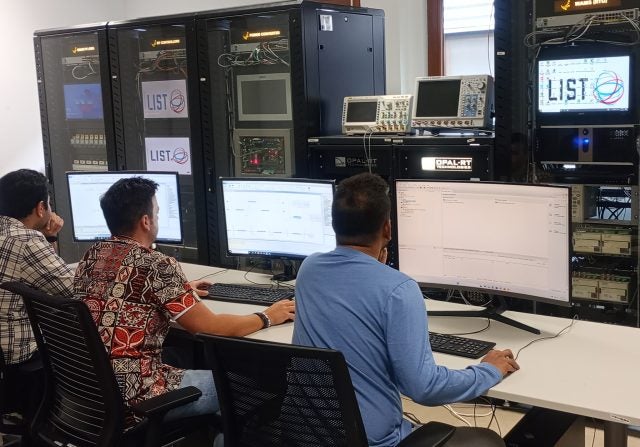HIL simulation for rolling stock vehicles
SNCF Voyageurs
Railway
02 / 21 / 2022

The company
SNCF Voyageurs, a branch of France’s national railway company, operates 15,000 commercial trains daily, transporting over five million passengers and more than 250,000 tonnes of goods.
The company’s Matériel Department oversees the maintenance of a fleet of 17,000 rolling stock vehicles. To ensure reliability and safety, its Equipment Engineering Centre near Lyon, France, focuses on validating traction chain control electronics through advanced simulation.
As part of its SimHIL project (SIMulated hardware-in-the-loop), SNCF Voyageurs partnered with OPAL-RT to modernize its validation processes and reduce risks associated with physical train testing.
The challenges
Testing train traction control systems under real conditions is costly, complex, and sometimes hazardous. Performing operational edge-case tests, such as extreme temperature, high acceleration, or sudden mechanical shocks, on actual rolling stock can immobilize trains and incur significant expense.
SNCF Voyageurs needed a real-time virtual environment to:
- Validate on-board computer updates and control systems without taking trains out of service.
- Accurately replicate electrical and mechanical behavior in critical operating conditions.
- Minimize testing risks while ensuring system integrity and compliance with safety standards.
The OPAL-RT solution
OPAL-RT joined the SimHIL project in 2013 to help SNCF Voyageurs build a real-time simulation platform capable of emulating the behavior of high-speed TGV traction systems.
Using RT-LAB and the FPGA-based Power Electronics Toolbox (eHS), SNCF Voyageurs created a digital twin of the train’s powertrain and traction control systems. The setup enables engineers to:
- Simulate traction chains, substations, and catenary networks in real time.
- Perform hardware-in-the-loop (HIL) testing with actual traction controllers.
- Reduce calculation time steps for highly accurate, real-time interactions.
By 2018, the SimHIL platform had transitioned to FPGA-based modeling, enabling faster and more precise simulations, supporting SNCF’s goal of achieving virtual certification for future systems.
The results
With OPAL-RT’s real-time simulation technology, SNCF Voyageurs now operates a flexible, modular, and scalable HIL platform that enhances its ability to validate control systems safely and efficiently.
The solution allows:
- Reduced physical testing costs and downtime of rolling stock.
- Improved model accuracy and testing flexibility across various traction systems.
- Enhanced safety and reliability for both personnel and infrastructure.
The success of SimHIL is also helping reshape rail industry standards, as regulators increasingly recognize HIL simulation as a viable and trustworthy validation method. SNCF Voyageurs continues to expand its use of OPAL-RT tools to meet future challenges, optimizing energy efficiency and performance across its fleet as part of a more sustainable, digital railway future.




